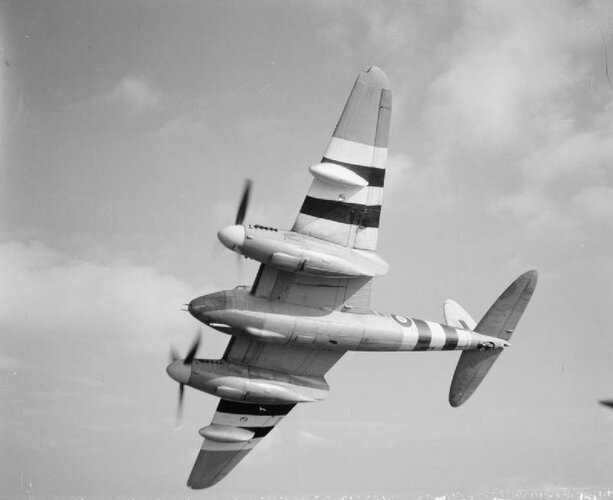Hi Bill,
Sounds perfectly sensible, and also matches the (estimated) performance chart from Mike's site:
Hm, that throws a spanner in the works of my "491 mph must be a dive speed" line of thought.
Not sure what that figure could be then, if we rule out a simple typo.
Regards,
Henning (HoHun)
The first XP-51F had a production P-51D empennage for the first flight, (decided upon because?) but in any case the next two plus the two G/J's had the larger empennage for better yaw stability. The reverse rudder boost tab was not installed.
The '491' figure was a brain fart/typo. Simply I pulled a number from only God knows where
Anecdotally, my father told me there was a 'tangible but not metrically definable' diminished roll authority in the B/D after boost tab installed. He flew both B and D w/o boost before the last block D-5.
How different sometimes is the perception of the same thing by Americans (or the Pentagon) and the rest of the world. I know that for Americans, the P-51 is almost the best fighter of World War 2... Somewhat in the shadow of the Mustang is the P-47 Thunderbolt. We considered them so-so planes. Average level. These are good interceptors, but medium fighters. A really cool fighter was the P-39 Airacobra. Of course, he was greatly respected.
I have a different POV.
The very best VVS fighter was a better dog fighter than any US fighter, but range and ceiling were far under US standards for USAAF war strategy. They would have been more effective versus USN.
If the Spit IX, XIV had the range of the P-51/P-47 they would have to be judged as clear best along with perhaps Ta 152 (with near equal range) as best al around fighters.
The P-39 was competitive but still inferior to Yak 9 and LaaG 7, both being short range low/medium altitude battlefield air superiority/interceptor types.
IMO neither the Yak 9 or Laag 7 would have been as good against US heavy bombers as Bf 109 and FW 190. The manueverability distinction between Yak 9 and P-51D disappeared above 20,000 feet. Had war existed between USSR and US just after WWII, the US Strategic Air Force would have been unstoppable (IMO) vs B-17/B-29 escorted by either P-51 or P-47. There was no role for VVS fighters in US battle doctrine. The closest was P-63, which was still inferior to P-51 and P-47.
The introduction of the F8F, P-47M and P-51H may have altered the 'perception' of lacking manueverabilty vs VVS fighters in every area save turn. Available Horsepower vs HP required is a great equalizer to greater Lift loading in climb and turn.
'Best Fighter' is entirely subjective depending on selection and weighing/evaluation criteria. That said Speed, dive speed, zoom climb and range will dominate over manueverability, and all western designers prized top speed for the ability to extend or engage in combat. Good pilots flying aircraft with significant top speed and dive capability didn't fight in the horizontal unless no other choice was available.


